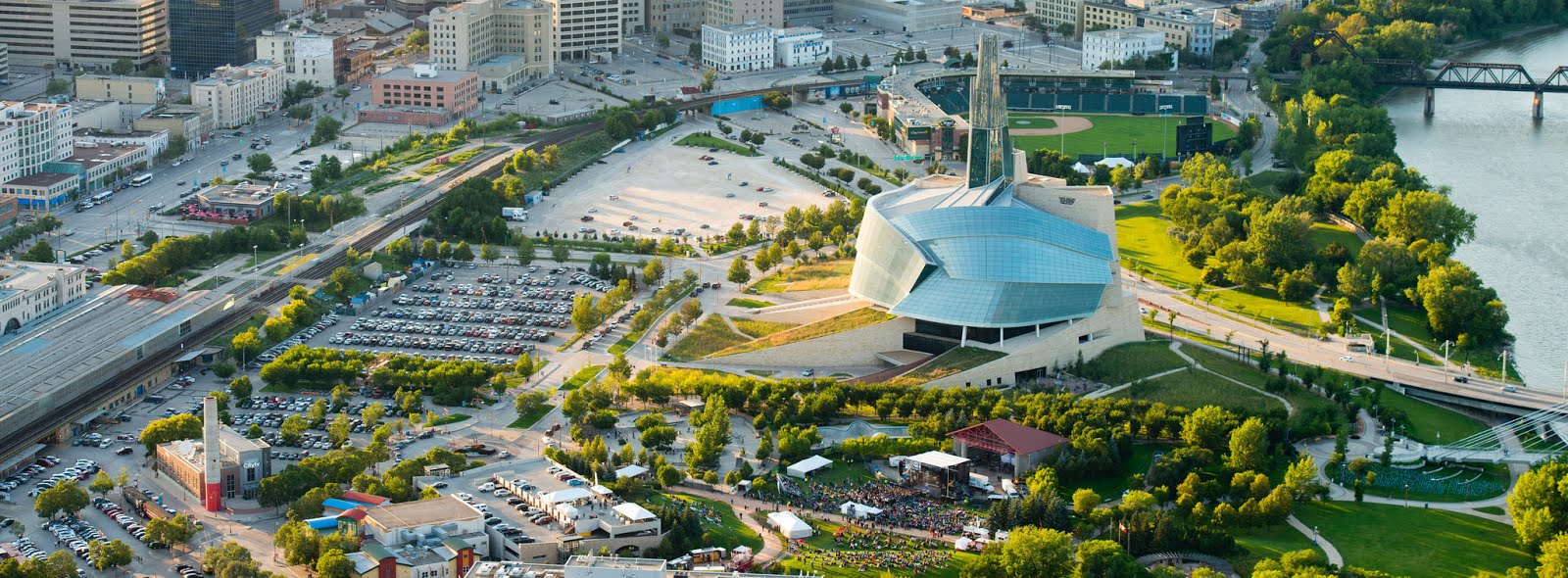As many of
you may know we are working on a long term plan for Winnipeg’s downtown
waterfront – really a 20-30 year vision of what can be done to celebrate
Winnipeg as a river-city. We’ll be
providing an update on the plan at our upcoming AGM on October 31*.
The idea for
creating such a plan evolved over the last decade or so through a variety of
discussions with people from throughout North America (and beyond) at the WaterfrontCenter annual conference. When I chaired the awards selection jury at this US
based organization it became quite clear that the creation of a long term vision
is an early and important step in city-building. It was equally clear that Winnipeg has a
great opportunity waiting to happen. So
discussions began with senior city, provincial and federal officials and the
idea was embraced - create a river-front plan that celebrates Winnipeg as a
river-city.
With developments
at The Forks we have taken a very important step in that direction. In fact,
Winnipeg has received three Waterfront Centre awards including the Riverwalk
(Forks to Legislature), The Forks Historic Port and River Trail/Warming huts. Winnipeg and The Forks have become well
recognized at these conferences.
A long term
vision needs careful thought and consideration.
Participation in meetings and work-shops at those conferences, where we
hear examples of what works and what doesn’t develop prepares us with new
insights and knowledge.
Two weeks
ago I attended the 30th Annual Waterfront Center Conference in
Washington DC. Although attendance was lower than usual with approximately 150
participants, it had representation from many parts of the world. I had the pleasure of chairing a panel on
mixed-use development with some very smart people from NYC, Vancouver BC, and
Duluth. Different stories from different
places with some very similar messages.
Some of the
highlights that hit home are:
- · Plan for the big-picture but don’t be overly prescriptive. Be open to take advantage of new ideas and new opportunities as they arise.
- · Although it is big attractions that often draw people to the waterfront we were reminded by our NYC panelist, who designed Battery Park, that the most compelling element is the relationship with the surrounding environment and making the waterfront part of everyday life.
- · Big is not always better and it is important to take full advantage of small green spaces that create intimate natural settings for leisure and relaxation.
- · Waterfronts are a life’s work and need continuous care and improvement (we experience this at The Forks).
- · It takes time and often a number of plans before projects are adopted and built so diligence and determination are required. (Interestingly those we speak to are impressed how quickly The Forks transformed a rail-yard into what exists today – it seems like a long-haul to us.)
- · Connect the waterfront to the people first, not the buildings. And acknowledge the gaps, ensuring linkages to the adjacent neighbourhoods.
These are good
lessons many of which we have tried to incorporate into or planning
process. We are appreciative of those
that share their stories at conferences like this but are equally receptive to local
Winnipeggers sharing their thoughts and ideas.
-Jim August
-Jim August
*The Forks North Portage Annual
General Meeting is being held on Wednesday, October 31 from 8:30 am to 10:00 am
at the Children’s Museum. It is open to the public.


No comments:
Post a Comment